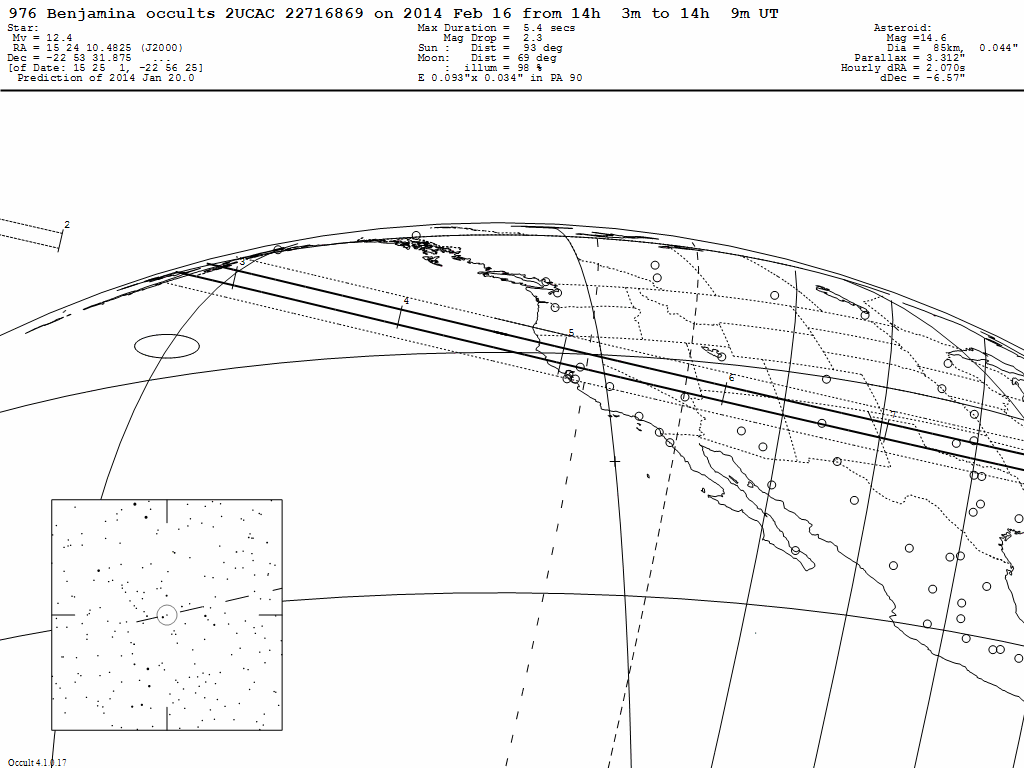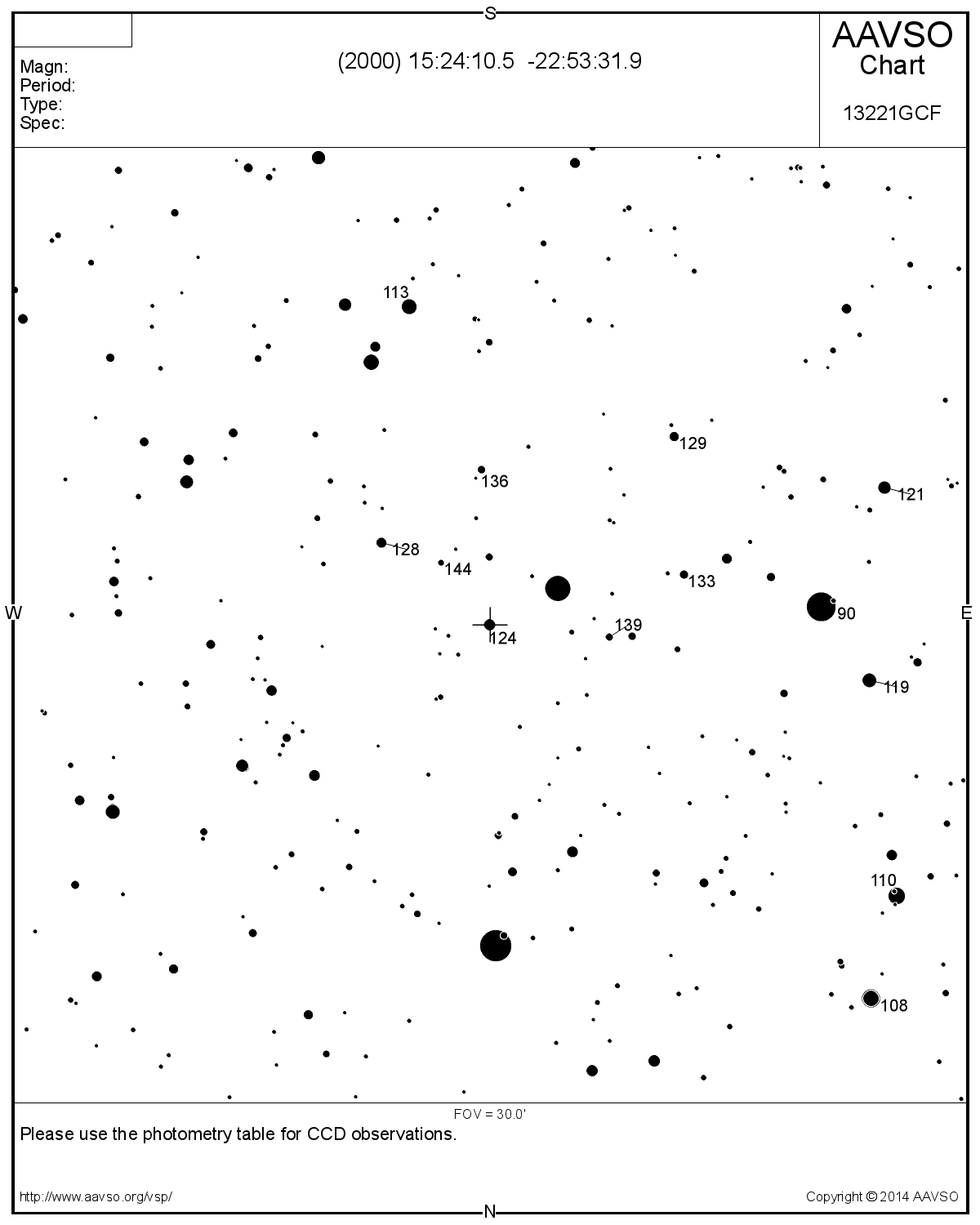Description
Asteroid (976) Benjamina will occult 2UCAC 22716869 on 2014 February 16 from 14:04 – 14:06 UT (Sunday, February 16, 6:04-6:06AM Pacific Standard Time). The star has a reported magnitude of 12.4. The star’s position is RA: 15:24:10.5 DEC: -22:53:31.9, J2000.
Because the event is occurring close to dawn with the sun below but fairly close to the horizon, this will be a challenging occultation to capture, especially for locations south of Reno. Because of this, we have downgraded this event to an OPTIONAL campaign for all RECON teams.
The chart below shows the predicted path of Benjamina.
IMPORTANT CHECK MALLINCAM SETTINGS: Regardless if your team gets up early to observes Benjamina, this is an important time to check the your camera settings. This is preferably done within the comfort of a warm classroom or home. After connecting your camera and recording device to the IOTA-VTI box, confirm that your camera settings match those shown on the Camera Page. See also a post that Marc provided over the holidays regarding Camera Performance for ways NOT to set your camera.
Because it takes the Mallincam time to stabilize after changing sense-up settings, we would would like those observing to be on the field and change the sense-up time to the appropriate value by 13:59:00 UT (05:59 AM PST), 5 minutes before the event. This will give the camera time to stabilize before recording data. RECON sites should start recording at 14:04:00 UT (06:04:00 AM PST) and run until 14:06:00 UT (06:06:00 AM PST).
Thank you for keeping track of your observations using the RECON Observation Logsheet.
Finder Charts (courtesy of Steve Preston and Guide)
For finder charts and a predicted ground-track of this event, visit Asteroid Occultation Updates.
Star Hop List
To be provided shortly.
A variation of the prior pointing techniques we have used at Yerington and Tonopah is to do a “precise goto” to each of the stars on the star hop list to figure out the final pointing offset pattern from the precise goto. By the time we tried this on a few we were ready to go to the final field and it worked really well to get the field quickly. Remember, you want to use sense-up of x128 for finding the field. Once you’ve got it, drop the rate back to the value to be announced above.
Image of field
To be updated.
Uploading data
To upload your video files and observation logsheet, go to http://spikard.boulder.swri.edu/upload.html.
Preliminary Results
To be updated.


